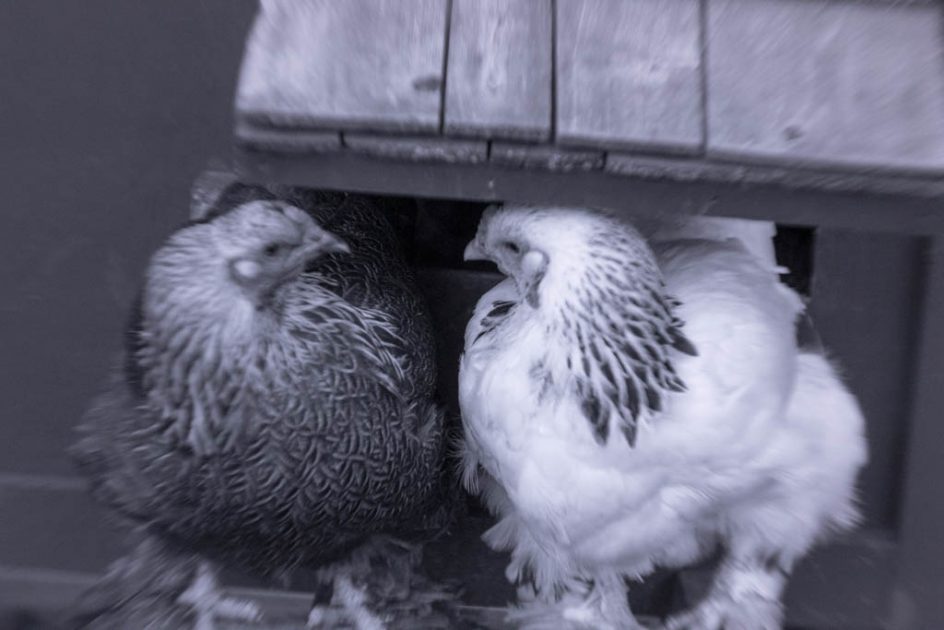When the grey hen and white hen started squabbling on the roost, I got a sense of the possibilities of this lens, once I really learn how to use it. I love it already. The hens were fighting over who could enter the roost first, the white hen won, as she usually does.
I spent some time today researching the story between my Petzval 58 lens and made some headway. Joseph Petzval (Josef Maximllian Petzval) was a 19th century mathematician, inventor and physicist best known for his work in the field of optics. Among his best known inventions were the portrait lens and opera glasses.
None of my lenses has a human story, but this one does.
The lens I took this picture with is the new Lomography Petzval (DSLR) Art Lens. It is a reinvention of the very famous portrait lens that first appeared in the 19th century at the height of the portrait period in photography. The new version is made in Russia, and of Russian glass, it seeks to duplicate the look that Petzval made famous in the 1840’s sharp focus areas with unique bokeh effects, very strong color saturation and artful vignettes and other effects.
Petzval was born in Hungary, earned an engineering degree in 1826 and got his doctorate in physics soon after. In 1837, he was invited to teach at the University of Vienna in Austria, and lectured on mathematics, differential equations, cable vibrations and ballistics.
During this period, he moved into abandoned Piarist monastery on top of the Kahlenberg mountain and built his own glass workshop there. A skilled lens sharpener and precision mechanic, he designed his famous lens in the old monastery. He married his housekeeper, then died in 1891.
The Petzval lens, legendary in its time was forgotten until just a few years ago.
Today, his lenses are being re-marketed in Russia by the Lomography company, and I bought one from B&H Photo Friday at less than half the price of a Canon L series lens, the kind I have been using since the beginning. It is quite everything it has claimed to be, but it’s like getting a border collie. It is surely not for everyone, or even most people.
It does not have any electronic part, no automatic focus or stabilizer to make my work easier. There is a bokeh control dial – I’ve not seen that before – that meshes with the metal plates but I have no idea how at the moment.
It will take me months to figure out how to use this lens properly, it is the complete opposite of the Canon or Nikon digital experience, where the photographer composes and pushes a button. That doesn’t work with the Petzval. It has a gear mechanism for focusing, metal plates to be inserted every time there is an Aperture change and a manual focus that almost guarantees at least half the shots – more, if today is a judge – don’t work. But the ones that do work are something, the glass here is distinct, unlike any other I have used.
I love the fact that the lens has such an exotic back story, I will think of Joseph Petzval and his optics every time I use it. I’m debating whether or not to take it to New York City tomorrow, I’d love to try it out on Robin, but it’s heavy and we are carrying a lot of stuff.

